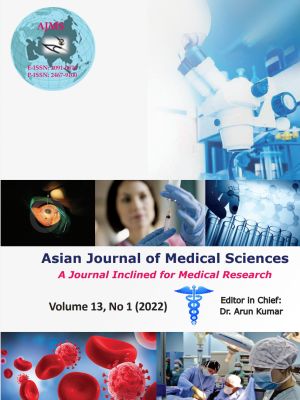COVID like illness versus COVID-19 (CLIC STUDY) – Clinical profile and outcome
Keywords:
Acute respiratory illness, Diabetes mellitus, Leukopenia, Total leukocyte countAbstract
Background: In December 2019, several cases of acute respiratory illness were detected in Wuhan city of China. This SARS-CoV-2 has been rapidly spreading worldwide ever since. SARS-CoV-2 has the potential to damage the vital organs such as lung, heart, liver, and kidney, and infection poses a considerable risk to patients by the high prevalence of pneumonia.
Aims and Objectives: The objectives of the study are as follows: (1) To study clinical profile and biochemical markers in SARI patients. (2) To compare the clinical profile and biochemical markers between SARS-CoV-2 positive and negative patients and their outcomes.
Materials and Methods: The present study is a hospital-based prospective cross-sectional study conducted on a total of 350 patients (150 SARI+200 COVID-19) in Bengaluru during the study period from June 2020 to May 2021.
Results: Diabetes mellitus was present in 30% of SARI and 42% in COVID-19 patients (P=0.03). Leukocytosis (Total Leukocyte Count [TLC] >11000 cells/mm3) was more common among SARI patients than COVID-19 patients (49.3% vs. 24.3%). Leukopenia (TLC <4000 cells/mm3) was significantly more common in COVID-19 patients than in SARI patients (10.2% vs. 3.6%, P<0.001).
Conclusion: COVID-19 infection is more common in patients with comorbidities such as diabetes mellitus and hypertension than SARI. Leukopenia was more common in COVID-19 patients whereas leukocytosis was more common in SARI patients.
Downloads
Downloads
Published
How to Cite
Issue
Section
License
Copyright (c) 2021 Asian Journal of Medical Sciences

This work is licensed under a Creative Commons Attribution-NonCommercial 4.0 International License.
Authors who publish with this journal agree to the following terms:
- The journal holds copyright and publishes the work under a Creative Commons CC-BY-NC license that permits use, distribution and reprduction in any medium, provided the original work is properly cited and is not used for commercial purposes. The journal should be recognised as the original publisher of this work.
- Authors are able to enter into separate, additional contractual arrangements for the non-exclusive distribution of the journal's published version of the work (e.g., post it to an institutional repository or publish it in a book), with an acknowledgement of its initial publication in this journal.
- Authors are permitted and encouraged to post their work online (e.g., in institutional repositories or on their website) prior to and during the submission process, as it can lead to productive exchanges, as well as earlier and greater citation of published work (See The Effect of Open Access).




